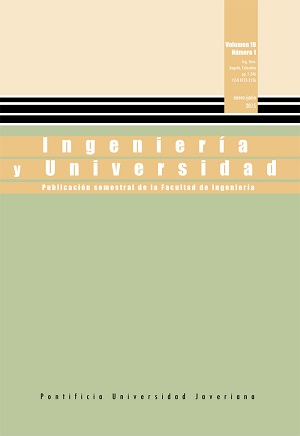Abstract
Results of a thermal degradation kinetic study of polylactic acid (PLA), raw and reprocessed by extrusion are shown. The reprocessed samples were obtained after each one of five successive extrusions. The samples were tested for glass transition temperature, melt flow index, higher heating value, and dynamic thermogravimetry. Kinetic triplet was determined from the dynamic thermogravimetry data by Flynn-Wall-Ozawa (FWO), Friedman, Gyulai, Kissinger-Akahira-Sunose (KAS), Kissinger, Differential and Integral Arrhenius, Briodo, Chang, Coats-Redfern, Flynn Wall, Horowitz-Metzger, MacCallum-Tanner, Madhusudanan, and Dynamic methods. It was found that activation energy (E) increases with the reprocessing, and that frequency factor (A) increases with the heating rate. It indicates that PLA experiences thermal degradation when is processed by continuous extrusion. It was also found that the average kinetic triplet obtained by isoconversional methods is E=147,14 kJ/mol, ln(A)= 26,94 (with A in min-1), and reaction order n = 0,86, and the triplet averaged from non-isoconversional methods is E=225,30 kJ/ mol, ln(A)= 45,07, and n = 0,91.
[2] A. A. Mendes, A. Cunha, and C. Bernardo, “Study of the degradation mechanisms of polyethylene during reprocessing”, Polym Degrad Stab., vol. 96, pp. 1125-1133, 2011.
[3] K. Jitendra, K. Pondey, A. Ragunata, K. Prep, and R. Sing, “An overview on the degradability of polymer nanocomposites”, Polym Degrad Stabil., vol. 88, pp. 234-250, 2005.
[4] M. Jakic, N. Stipanelov, and I. Klari, “Thermal degradation of poly(vinyl chloride)/poly(ethylene oxide) blends: Thermogravimetric analysis”, Polym Degrad Stab., vol. 98, pp. 1738-1743, 2013.
[5] P. Wilichowski, “Comparison of effect of smooth and grooved feed extrusion on HDPE recyclability”, M. Sc. Thesis, Univ. Winsconsin, Madison, USA, 2004.
[6] J. Pérez, J. Vilas, J. Laza, S. Arnáiz, F. Milangos, E. Bilbao et al., “Effect of reprocessing and accelerated ageing on thermal and mechanical polycarbonate properties”, J Mater Proces Technol., vol. 210, pp. 727-733, 2010.
[7] R. Valapa, G. Pugazhenthi, and V. Katiyar, “Thermal degradation kinetics of sucrose palmitate reinforced poly(lactic acid) biocomposites”, Int J Biolog Macromol., vol. 65, pp. 275-283, 2014.
[8] W. Grellmann and S. Seidler, Polymer Testing. Munich: Editorial Hanser, 2007.
[9] F. Carrasco, P. Pages, J. Gámez-Pérez, O. O. Santana, and M. Maspoch, “Processing of poly(lactic acid): characterization of chemical structure, thermal stability and mechanical properties”, Polym Degrad Stab., vol. 95, pp. 116-125, 2010.
[10] D. S. Achilias, E. Panayotidou, and I. Zuburtikudis, “Thermal degradation kinetics and isoconversional analysis of biodegradable poly(3-hydroxybutyrate)/organomodified montmorillonite nanocomposites”, Thermochim Acta, vol. 514, pp. 58-66, 2011.
[11] Z. Ma, D. Chen, J. Gu, B. Bao, and Q. Zhang, “Determination of pyrolysis characteristics and kinetics of palm kernel shell using TGA-FTIR and model-free integral methods”, Energ Convers Manag., vol. 89, pp. 251-259, 2015.
[12] J. Tochacek and J. Jancar, “Processing degradation index (PDI). A quantitative measure of processing stability of polypropylene”, Polym Test., vol. 31, pp. 1115-1120, 2012.
[13] J. W. Park, S. C. Oh, H. P. Lee, H. T. Kim, and K. O. Yoo, “Kinetic analysis of termal decomposition of polymer using a dynamic model”, Korean J Chem. Eng., vol. 17, pp. 489-496, 2000.
[14] H. Kim and S. Oh, “Kinetics of thermal degradation of waste polypropylene and highdensity polyethylene”, J Indust Engin Chem., vol. 11, núm. 5, pp. 648-656, 2005.
[15] S. Mallakpour and M. Taghavi, “The accuracy of approximation equations in the study of thermal decomposition behavior of some systhesized optically active polyamides”, Iranian Polym J., vol. 18, núm. 11, pp. 857-872, 2009.
[16] A. Aboulkas, K. El Harfi, and A. El Bouadili, “Thermal degradation behaviors of polyethylene and polupropylene. Part I: Pyrolysis”, Energy Conv. Manag., vol. 51, pp. 1363-1369, 2010.
[17] W. B. Wan, F. N. Ani, and H. H. Masjuki, “Thermal stability evaluation of palm oil as energy transport media”, Energy Conv Manag., vol. 46, pp. 2198-2215, 2005.
[18] W. Kim, S. Kim, S. Lee, and I. Hong, “Kinetic characterization of thermal degradation process for commercial rubbers”, J Ind Engin Chem., vol. 6, pp. 348-355. 2000.
[19] J. C. Santos, I. M. Dos Santos, A. G. Desousa, S. Prasad, and A. V. Dos Santos, “Thermal stability and kinetic study on thermal decomposition of commercial edible oils by thermogravimetry”, J Food Sci., vol. 67, núm. 4, pp. 1393-1398, 2006.
[20] J. Badia, L. Santonja, A. Martínez-Felipe, and A. Ribes-Greus, “Reprocessed polyactide: studies of thermo-oxidative decomposition”, Biores Technol., vol. 114, pp. 622-628, 2012.
[21] F. Carrasco, L. Pérez-Maqueda, P. Sánchez-Jiménez, A. Perejón, O. Santana, and M. Maspoch, “Enhanced general analytical equation for the kinetics of the thermal degradation of poly(lactic acid) driven by random scission”, Polym Test., vol. 32, pp. 937-945, 2013.
[22] B. M. Roduit, “Computational aspects of kinetic analysis: Part E: The ICTAC Kinetics Project-numerical techniques and kinetics of solid state processes”, Thermoch Acta, vol. 355, pp. 171-180, 2000.
This journal is registered under a Creative Commons Attribution 4.0 International Public License. Thus, this work may be reproduced, distributed, and publicly shared in digital format, as long as the names of the authors and Pontificia Universidad Javeriana are acknowledged. Others are allowed to quote, adapt, transform, auto-archive, republish, and create based on this material, for any purpose (even commercial ones), provided the authorship is duly acknowledged, a link to the original work is provided, and it is specified if changes have been made. Pontificia Universidad Javeriana does not hold the rights of published works and the authors are solely responsible for the contents of their works; they keep the moral, intellectual, privacy, and publicity rights.
Approving the intervention of the work (review, copy-editing, translation, layout) and the following outreach, are granted through an use license and not through an assignment of rights. This means the journal and Pontificia Universidad Javeriana cannot be held responsible for any ethical malpractice by the authors. As a consequence of the protection granted by the use license, the journal is not required to publish recantations or modify information already published, unless the errata stems from the editorial management process. Publishing contents in this journal does not generate royalties for contributors.


